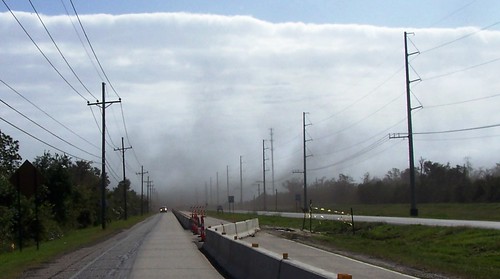We've been reading about ASTM D7520, or the Standard Test Method for Determining the Opacity of a Plume in the Outdoor Ambient Atmosphere, which is also known as EPA's alternative Method 82. Method 82 is an alternative to Method 9, which is where people can get certified at "Smoke School" ( #smoke-school ) to use their own eyes in a carefully designed methodology to observe and report plumes.
A little background
Though it’s called “Smoke School” by the companies which offer the training (it’s often not done by the EPA itself), it's really to identify anything forming a plume -- except for water vapor. So, that could be combustion products (smoke), and also other visible gaseous emissions, or fugitive emissions like windblown dust. Observers can usually report these observations to the state Department of Environmental Quality (DEQ) or whomever administers air quality regulations (for California, it's called the Air Quality Management District, or AQMD)
The PDF description of the method (as you can see in the link above) is not available for free ($64), but it does outline a way to do with a digital camera what Smoke School has you do direct observation -- monitor plumes.
It also specifies software to analyze those photos to deduce emissions opacity levels. There are a lot of specifics detailed in the method about how far from the emissions plume the camera needs to be, in what orientation relative to the plume and relative to the sun, etc.
The question
We're wondering if anyone has heard of using an unsupervised camera -- in a tripod running in timelapse mode, for example, or just recording high-resolution video, or perhaps even triggering recording on motion -- to conduct this method or something similar, and if it was deemed appropriate or admissible by authorities. It could be one of the cameras certified in Method 82/ASTM D7520 -- or just a timelapse camera as was recently tested for stream monitoring at a Public Lab event.
We’re asking because we think this could make monitoring much more continuous and make it more likely that people would catch emission events on camera.
Here's an example of a person who lives on this dusty street, a housewife of steely resolve, using a point and shoot (Kodak Z7590 Zoom) to capture the dust from a pet coke / coal pile in Plaquemines Parish, LA, 4th Nov, 2013. Location roughly 29.6202143,-89.9366365
The weather for that day was recorded At the grand isle airport for Nov 4th 2013, recording winds 14mph ene kaxo nov 4 2013
https://www.flickr.com/photos/healthygulf/albums/72157637941529793
Note that the dust is thick enough to trigger the running lights of the oncoming truck. I think the poles are about 70 m apart from one another, although it varies. Let's say that the dust storm is 200m away and could be 500m thick --the length of source facility.

link to Google Street View of same location, Oct 2013
Is this a question? Click here to post it to the Questions page.
Wow! That is a seriously dusty road! Is "fugitive dust" subject to opacity regulations in Louisiana? I recently learned that fugitive dust (such as road dust) is not subject to opacity regulations in Colorado, which is astounding to me.
Is this a question? Click here to post it to the Questions page.
Reply to this comment...
Log in to comment
Some reference on light sensors in cars.
You could experiment, i suppose, by blowing smoke in front of your instrument panel
Reply to this comment...
Log in to comment
It turns out that Alternative Method 82 is pretty strict in its procedure, so timelapse and video cameras wouldn't be able to explicitly do that method, but I think they could probably prompt an inspection. Anyway, I recently learned a lot more about EPA Method 9, and some more about Alternative Method 82, and wrote a blog post about it: https://publiclab.org/notes/gretchengehrke/10-28-2016/colorado-regulations-hotsheet
Reply to this comment...
Log in to comment